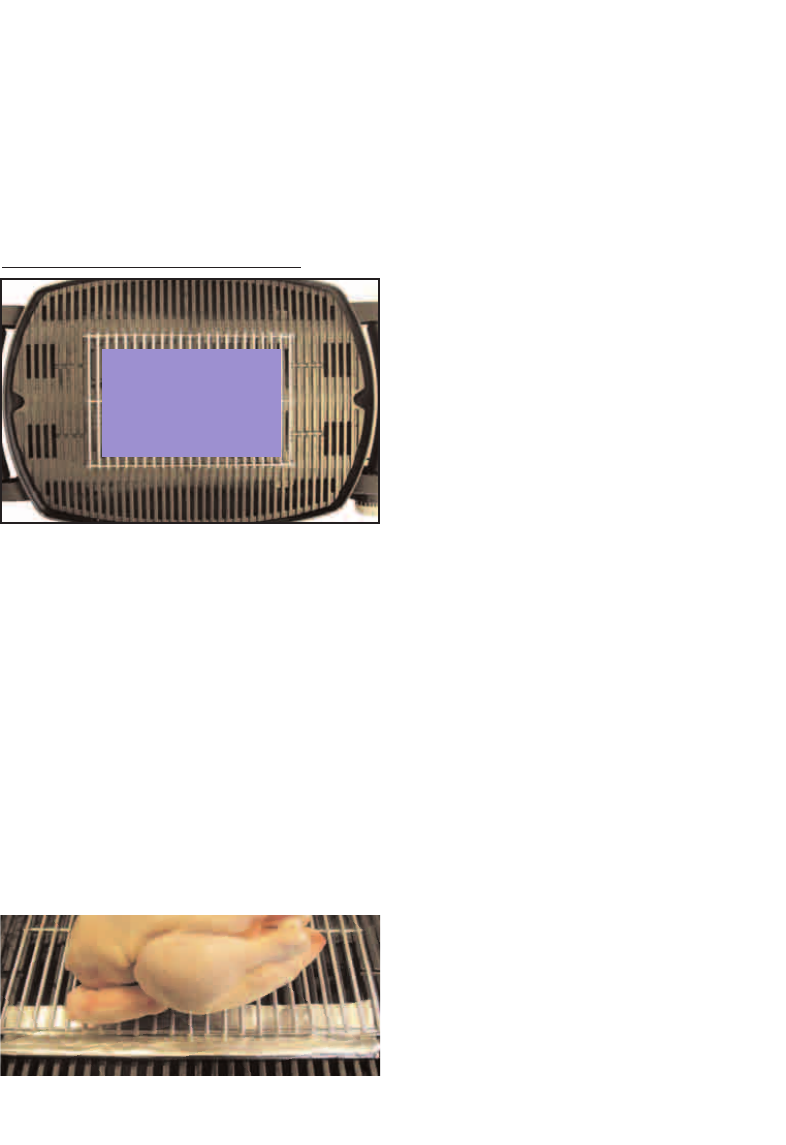
3
roasting trivet accessory. Using this accessory
allows air to convect all around the roast for
more even cooking.
To ensure the bottom of the roast is not scorched
by the hot grill bars, use a roasting trivet and
make sure the centre burner is left off
.
It’s best to cook a roast that is small enough to
fit in the cooler area between the gas flames
(see photograph above). You’ll get better
results that way and you can still fit a roast the
size of a nice leg of lamb. If you want to cook
the best roasts (a large turkey, leg of pork or
smoked ham) you should consider buying a
Weber One-Touch
™
charcoal kettle. They are
relatively inexpensive, the latest models are
really easy to use, and nothing can match
them for flavour. If you don’t have a Weber
kettle, try this technique. If your roast is so big
that part of it has to sit above the lit flame,
you will need a sheet of foil that is folded to
produce a 'heat-shield' of double thickness
between the flame and the roast. (Double
thickness creates an air gap between the two
layers of foil which assists insulation).
This foil lies on the cooking grill directly below
the edges of the roasting trivet (Photograph E).
When you are roasting meat you must also pre-
heat the barbecue. The instructions for pre-
heating the Weber Big Family Q™ for roasting-
follow.
Pre-heating and Roasting
To pre-heat your Weber Big Family Q™, open
the lid and turn the large burner control knob
to START/HI (Photograph A). P ress the red igni-
tion button to light the barbecue. Once alight,
leave the centre burner off and turn the gas
down to LOW (Photograph C). Allow the gas to
heat for 10 minutes with the lid closed. Your
Weber Big Family Q™ is now pre-heated and
ready for roasting. Set the gas control knob to
a higher setting once you have placed your
roast inside. The setting (Photograph D) has
proven to be a pretty good guide. If your barbe-
cue is equipped with a lid thermometer you
should try to always cook roasts in the tempera-
ture range 200-225
0
C. Remember, there is no
need to turn the meat when roasting, so do not
open the lid unnecessarily.
Roasting Tip
Getting the timing right so that your roast is
cooked to your liking can be difficult at times
when cooking outside. Wind, ambient temper-
ature and the temperature of the meat when
you started cooking, all influence the amount
of time a roast needs to be cooked.
One of the best ways to make sure you get
your roast cooked just the way you like it is to
use a meat thermometer. With a standard
meat thermometer you can read the internal
temperature of the meat, so you can tell when
it’s cooked to your liking. The latest meat
thermometers are digital/remote. They really
are fool-proof. (How they work is explained on
the inside back cover.)
Cooler Area
for Roasting.
Centre Burner off.
Photograph E
The foil is double folded so it is wide enough to cover the burner that
is under the food. The legs of the roasting trivet hold the foil in place.


















